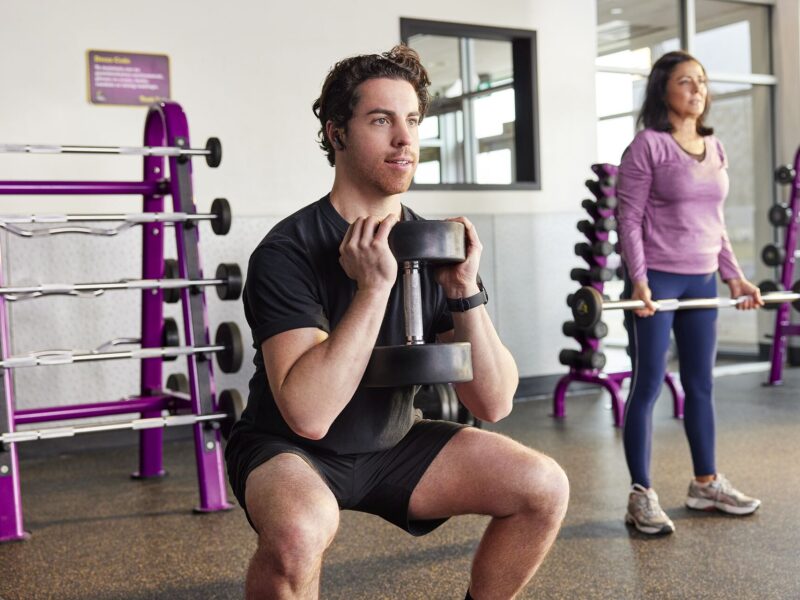Introduction:
In today’s dynamic world, physical fitness extends beyond the confines of the gym. Functional training has emerged as a popular approach that emphasizes movements and exercises that mimic real-life activities, enhancing strength, agility, and mobility for everyday tasks and athletic performance. In this guide, we’ll explore the principles of functional training, discuss its benefits for real-life functionality, and provide practical strategies for incorporating functional exercises into your fitness routine.

Understanding Functional Training:
Functional training focuses on movements that translate directly to activities of daily living, sports-specific skills, and occupational demands. Unlike traditional weightlifting exercises that isolate individual muscles or muscle groups, functional exercises engage multiple muscle groups simultaneously, promoting coordination, balance, and preconception. Examples of functional movements include squats, lunges, pushes, pulls, twists, and carries, which involve multiple joints and muscle groups working together in coordination.
Key Principles of Functional Training:
Functional training is guided by several key principles that distinguish it from traditional strength training:
Multi-Planar Movement: Functional exercises involve movement in multiple planes of motion (sagittal, frontal, and transverse), mimicking the multidimensional nature of real-life activities.
Integrated Movement Patterns: Functional exercises emphasize integrated movement patterns that replicate everyday movements, such as squatting, bending, reaching, lifting, and twisting, rather than isolating individual muscles.
Core Stability and Mobility: Functional training prioritizes core stability and mobility, as the core serves as the foundation for efficient movement and plays a vital role in transferring force between the upper and lower body.
Balance and Preconception: Functional exercises challenge balance and preconception, enhancing spatial awareness and neuromuscular coordination, which are essential for preventing falls and improving athletic performance.
Functional Progressions: Functional training utilizes progressive overload principles to gradually increase the complexity and intensity of exercises, allowing individuals to continually challenge their strength, stability, and mobility.
Benefits of Functional Training for Real-Life Functionality:
Functional training offers a wide range of benefits for improving real-life strength, agility, and mobility:
Enhanced Movement Efficiency: Functional exercises improve movement efficiency and coordination, making everyday activities such as lifting, carrying, bending, and reaching easier and more effortless.
Injury Prevention: By addressing imbalances, weaknesses, and movement dysfunctions, functional training helps reduce the risk of injury during daily activities and sports participation.
Improved Balance and Stability: Functional exercises challenge balance and stability, enhancing preconception and reducing the risk of falls, particularly in older adults.
Functional Strength and Power: Functional training develops functional strength and power that can be directly applied to real-life activities, such as lifting groceries, moving furniture, or playing sports.
Greater Range of Motion: Functional exercises promote flexibility and mobility, increasing joint range of motion and reducing stiffness and discomfort during daily movements.
Sports-Specific Performance: Functional training enhances sports-specific skills and performance by replicating movement patterns and biomechanics relevant to specific sports activities.
Functional Independence: Functional training fosters independence and autonomy by improving the ability to perform activities of daily living with confidence and ease, enhancing quality of life and overall well-being.
Practical Strategies for Incorporating Functional Training:
To integrate functional training into your fitness routine, consider the following strategies:
Identify Functional Movements: Identify functional movements that replicate activities you perform regularly or movements specific to your sport or occupation.
Use Functional Equipment: Incorporate functional training tools such as kettle-bells, resistance bands, stability balls, suspension trainers, and balance discs to add variety and challenge to your workouts.
Focus on Movement Quality: Prioritize movement quality over quantity, ensuring proper form and technique to maximize effectiveness and minimize the risk of injury.
Progress Gradually: Progressively increase the intensity, complexity, and resistance of functional exercises over time to continually challenge your strength, stability, and mobility.
Include Functional Workouts: Design workouts that incorporate functional movements in a balanced and comprehensive manner, targeting different movement patterns and muscle groups.
Emphasize Core Stability: Integrate exercises that target the core muscles to improve stability and posture, enhancing overall movement efficiency and reducing the risk of injury.
Listen to Your Body: Pay attention to your body’s feedback and adjust the intensity, volume, and frequency of your workouts as needed to prevent over-training and promote recovery.
Conclusion:
Functional training offers a holistic approach to fitness that enhances real-life strength, agility, and mobility by focusing on movements that translate directly to everyday activities and sports-specific skills. By incorporating functional exercises into your fitness routine and emphasizing movement quality, balance, and progression, you can improve functional independence, reduce the risk of injury, and enhance overall quality of life. Remember, functional training is not just about building muscle; it’s about building a strong, resilient body capable of thriving in the demands of daily life. So, embrace the principles of functional training and reap the rewards of improved movement efficiency, enhanced performance, and functional longevity.










